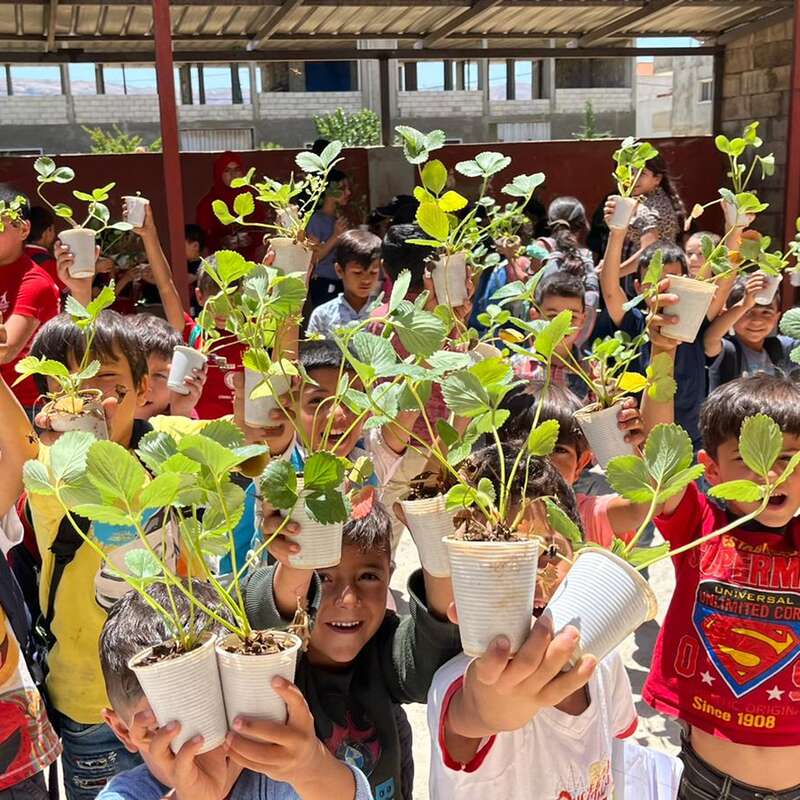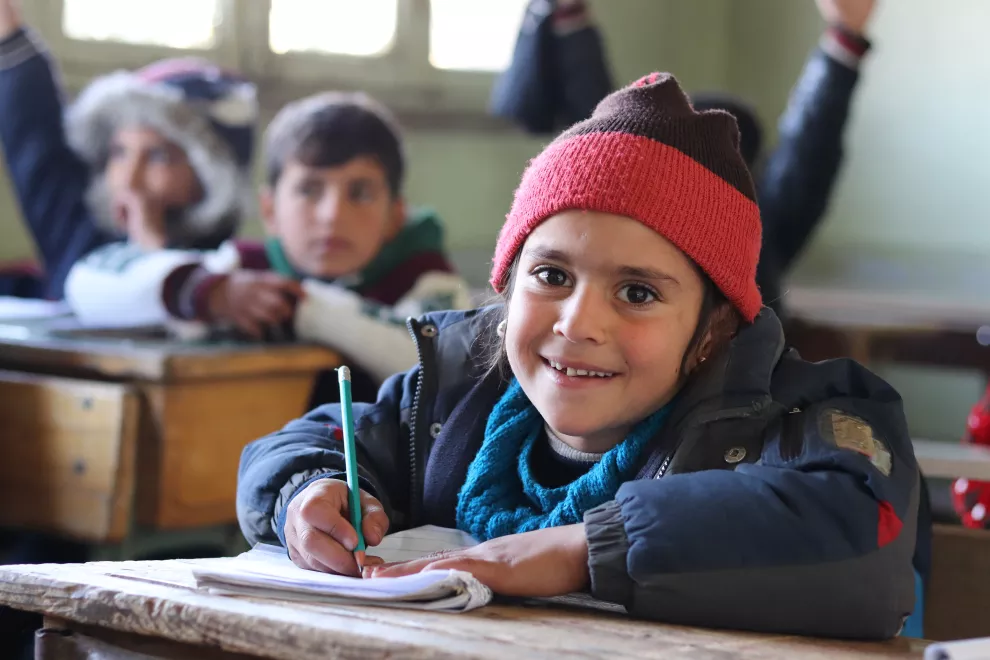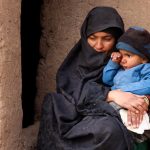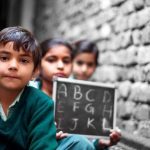Community Efforts for children: Community Efforts That Change Children’s Lives
In a world often marked by strife and adversity, community efforts play a pivotal role in shaping the trajectories of children affected by various challenges, including poverty, conflict, displacement, and discrimination. Community Efforts for children are not only essential for meeting immediate needs but also for fostering long-term positive outcomes, ensuring that children can thrive despite adversity. From educational programs to healthcare outreach, psychosocial support, and beyond, a myriad of community-driven endeavors are making a profound difference in the lives of children globally.

Educational Community Efforts for children: Enhancing Access and Quality
Access to quality education is fundamental in breaking the cycle of poverty and providing children with the tools they need to build brighter futures. Community Efforts for children often focus on ensuring access to schooling for marginalized children, including refugees, internally displaced persons, and those living in remote areas. These efforts may involve the establishment of informal schools, mobile learning centers, or advocacy campaigns to eliminate barriers to education.
Furthermore, beyond mere access, Community Efforts for children strive to improve the quality of education provided. This can include teacher training programs, curriculum development tailored to local needs, and the provision of essential learning materials. By investing in education at the community level, stakeholders empower children with the knowledge and skills necessary to overcome challenges and pursue their aspirations.

Healthcare Community Efforts for children: Improving Well-being and Accessible Services
Access to healthcare is another critical determinant of children’s well-being and development. Community Efforts for children often focus on improving access to essential healthcare services, particularly in underserved areas where medical facilities may be scarce or inaccessible. Mobile clinics, community health workers, and outreach programs bring vital healthcare services directly to children and families in need.
Moreover, healthcare outreach initiatives extend beyond physical health to encompass mental health and psychosocial support. In contexts affected by conflict or displacement, children may face significant trauma and psychological distress. Community-based psychosocial support programs provide counseling, recreational activities, and safe spaces for children to express themselves and heal from the emotional scars of their experiences.
Shelter and Housing Community Efforts for children: Providing Safe Spaces for Growth
Safe and stable housing is a fundamental need for children’s well-being and development. However, many children around the world are deprived of this basic necessity due to factors such as poverty, conflict, or natural disasters. Community Efforts for children for shelter and housing projects aim to address this issue by providing safe and dignified living spaces for vulnerable children and their families.
These initiatives may involve the construction of affordable housing units, rehabilitation of informal settlements, or provision of emergency shelter in times of crisis. By ensuring that children have a secure place to call home, these projects create the foundation for stability and growth, enabling children to thrive in their environments.

Vocational Training and Skills Development: Community Efforts for children
For children approaching adolescence and young adulthood, acquiring vocational skills and training is crucial for future economic empowerment and self-sufficiency. Community-led vocational training programs equip children with practical skills in various fields, ranging from agriculture and craftsmanship to information technology and entrepreneurship.
Community Efforts for children not only provide children with valuable skills for employment but also instill confidence and self-esteem as they learn to navigate the challenges of the job market. By investing in vocational training and skills development, communities empower children to break the cycle of poverty and contribute positively to their families and societies.
Legal Assistance and Advocacy: Ensuring Rights and Protection by Community Efforts for children
Children, especially those living in vulnerable circumstances, are often at risk of exploitation, abuse, and rights violations. Community efforts focused on legal assistance and advocacy play a vital role in safeguarding children’s rights and ensuring access to justice.
Community Efforts for children may involve providing legal aid to children and families facing legal challenges, advocating for policy reforms to protect children’s rights, and raising awareness about issues such as child labor, trafficking, and discrimination. By amplifying the voices of children and advocating for their rights, communities create environments where children can grow and thrive in safety and dignity.
Cultural Integration and Social Inclusion: Fostering Belonging and Understanding
Children affected by displacement, migration, or discrimination often face challenges in integrating into new communities and cultures. Community efforts aimed at promoting cultural integration and social inclusion play a crucial role in creating welcoming environments where all children feel valued and accepted.
These initiatives may involve cultural exchange programs, interfaith dialogue, and community events that celebrate diversity and foster mutual understanding. By promoting empathy, respect, and solidarity, communities lay the groundwork for inclusive societies where every child has the opportunity to fulfill their potential.
Community efforts for child refugees
Community efforts for child refugees are essential in providing them with the support and resources they need to rebuild their lives in the face of displacement and adversity. These initiatives encompass a range of interventions aimed at addressing the unique challenges and vulnerabilities faced by refugee children.
First and foremost, community efforts focus on ensuring access to education for refugee children. This may involve the establishment of temporary learning centers in refugee camps, the provision of educational materials, and the training of teachers to support the specific needs of refugee students. By prioritizing education, communities empower refugee children with the knowledge and skills necessary to overcome barriers and build brighter futures.
Healthcare outreach is another critical component of community efforts for child refugees. Mobile clinics, health education programs, and psychosocial support services are deployed to address the physical and emotional well-being of refugee children and their families. These initiatives aim to mitigate the impact of trauma and displacement on children’s health and development, ensuring they receive the care and support they need to thrive.
Community efforts also extend to providing safe and dignified living conditions for refugee children. Shelter projects, emergency assistance, and housing support initiatives help ensure that refugee families have access to secure housing, protection from the elements, and basic amenities. By addressing their immediate needs for shelter and safety, communities lay the groundwork for refugee children to heal and rebuild their lives.
International organizations:
Yes, there are several international setups and organizations dedicated to supporting vulnerable children, including child refugees. These organizations work tirelessly to provide essential services, advocate for their rights, and ensure their well-being. Some prominent international setups include:
1. **United Nations High Commissioner for Refugees (UNHCR)**: UNHCR is the primary UN agency mandated to protect and support refugees globally. It provides assistance such as shelter, healthcare, education, and livelihood support to refugees, including children, and works to find durable solutions to their displacement.
2. **United Nations Children’s Fund (UNICEF)**: UNICEF works to protect the rights of children worldwide, including those affected by conflict, displacement, and emergencies. UNICEF provides humanitarian assistance, health and nutrition support, education, and child protection services to refugee children and their families.
3. **International Rescue Committee (IRC)**: The IRC responds to humanitarian crises and works to support refugees and displaced populations around the world. They provide emergency assistance, healthcare, education, and protection services to vulnerable children and families affected by conflict and displacement.
4. **Save the Children**: Save the Children is a global organization dedicated to promoting children’s rights, providing humanitarian assistance, and supporting child refugees and displaced populations. They deliver essential services such as education, healthcare, protection, and psychosocial support to children in crisis-affected areas.
5. **World Food Programme (WFP)**: The WFP provides food assistance to refugees and displaced populations worldwide, including vulnerable children and families. In addition to addressing hunger and malnutrition, they support access to education and livelihood opportunities for refugees.
6. **International Committee of the Red Cross (ICRC)**: The ICRC works to protect and assist victims of armed conflict and other situations of violence, including refugees and displaced persons. They provide humanitarian aid, healthcare, and support for family reunification to those affected by conflict and displacement.
7. **Médecins Sans Frontières (Doctors Without Borders)**: MSF provides medical humanitarian assistance to populations affected by conflict, epidemics, natural disasters, and other emergencies. They operate medical facilities, provide healthcare services, and support vulnerable populations, including child refugees, in crisis-affected areas.
These organizations, among others, collaborate with governments, local communities, and other stakeholders to provide comprehensive support to child refugees and ensure their rights and well-being are upheld in accordance with international law and humanitarian principles.
read also: From Despair to Hope: The Journey of Child Refugees
Conclusion:
Community efforts are instrumental in changing children’s lives for the better, providing essential support and opportunities for growth, resilience, and empowerment. From education and healthcare to shelter, vocational training, legal assistance, and social inclusion, these initiatives address the multifaceted needs of children living in diverse circumstances. By harnessing the collective power of communities, we can create a world where every child has the chance to thrive and realize their dreams.




